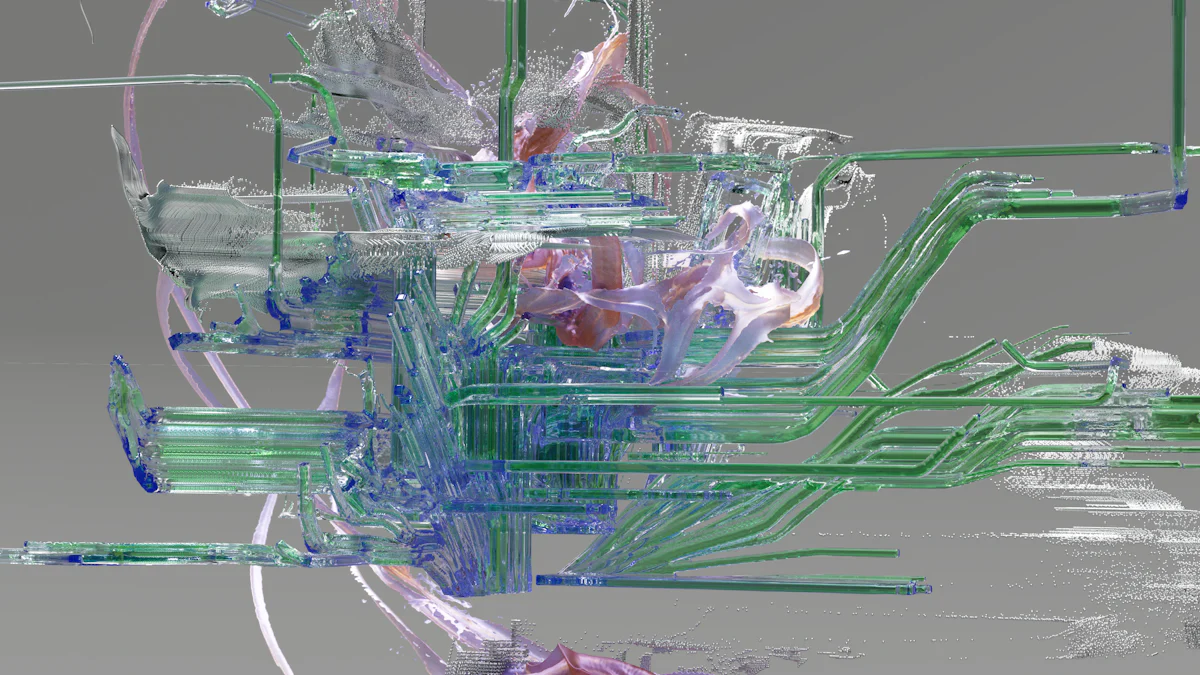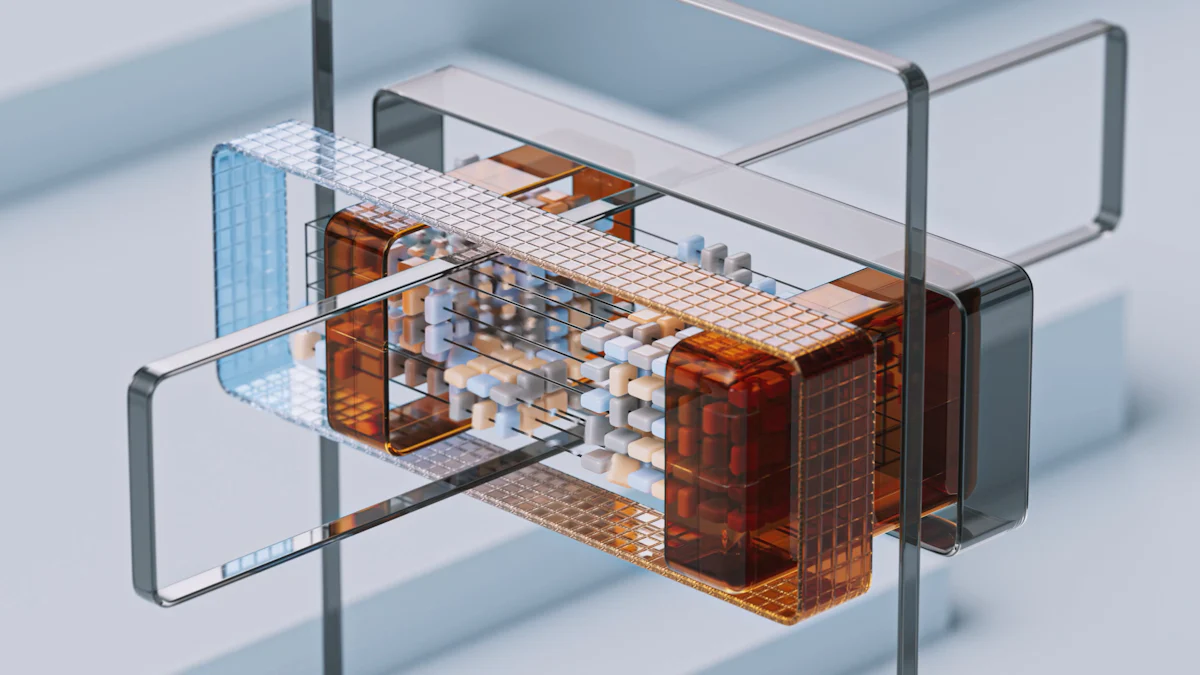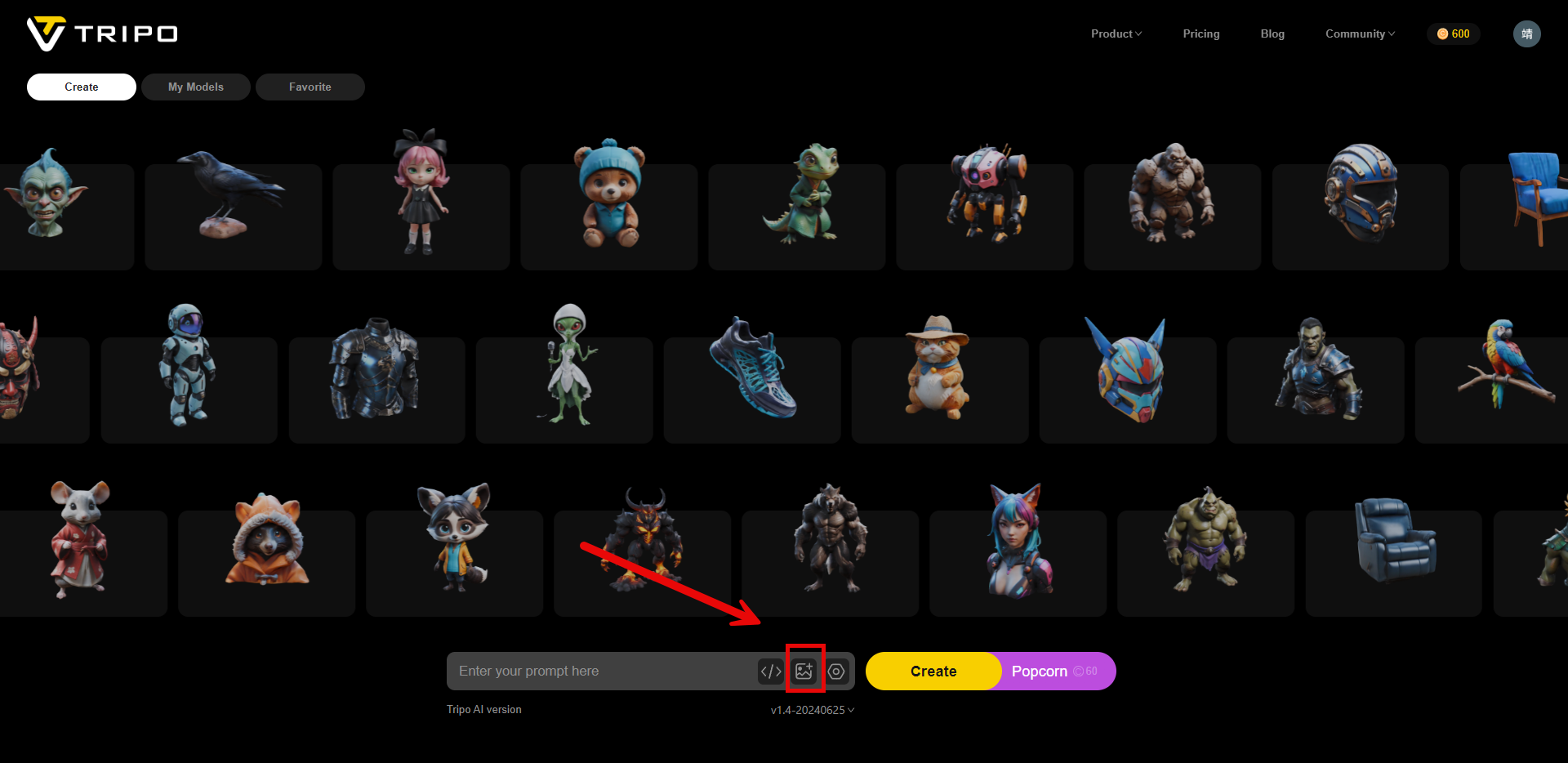
How to Create 3D Models with AI Technology

3D modeling has transformed industries over the past 30 years. AI technology now plays a crucial role in this evolution. An AI 3D model generator can create high-quality models from text prompts or images within minutes. This advancement reduces time and cost significantly. Tools like Blender and Autodesk 3ds Max offer powerful capabilities for AI-powered 3D modeling. The Autodesk AI Lab continues to innovate, making 3D modeling more accessible and efficient. For those looking for cost-effective solutions, there are free AI 3D model generators available that provide impressive results.
Understanding 3D Modeling
Basics of 3D Modeling
Definition and History
3D modeling involves creating a three-dimensional representation of any object or surface. This process uses specialized software to manipulate points in virtual space, known as vertices, to form a mesh. The history of 3D modeling dates back to the late 20th century when computer graphics began to evolve rapidly. Early pioneers introduced foundational techniques that have since transformed various industries, including architecture and design.
Traditional vs. Modern Techniques
Traditional 3D modeling relied heavily on manual input and labor-intensive processes. Artists and designers had to meticulously shape and refine models, often taking weeks or months to complete a single project. Modern techniques leverage advanced software and AI technology to streamline this process. Automation now handles repetitive tasks, significantly reducing the time required for model creation. This shift has enabled more complex and detailed models, enhancing the overall quality and efficiency of 3D modeling.
Key Concepts in 3D Modeling
Meshes and Polygons
Meshes form the backbone of 3D models. A mesh consists of vertices, edges, and faces that define the shape of a 3D object. Polygons, typically triangles or quadrilaterals, make up these faces. The arrangement and number of polygons determine the model's complexity and detail. High-polygon meshes offer greater detail but require more computational power, while low-polygon meshes are less detailed but more efficient.
Texturing and Shading
Texturing adds color, patterns, and details to a 3D model's surface. Textures can simulate materials like wood, metal, or fabric, enhancing the model's realism. Shading, on the other hand, affects how light interacts with the model's surface. Different shading techniques can create various effects, from smooth gradients to sharp contrasts. Together, texturing and shading play crucial roles in making 3D models appear lifelike.
Rendering
Rendering converts a 3D model into a 2D image or animation. This process involves calculating light, shadows, and reflections to produce a final visual output. Rendering can be computationally intensive, requiring powerful hardware and optimized algorithms. Advances in rendering technology have enabled real-time rendering, allowing designers to see changes instantly. This capability has revolutionized fields like gaming, film, and virtual reality by providing highly realistic visuals.
Role of AI in 3D Modeling

How AI Enhances 3D Modeling
Automation of Repetitive Tasks
AI technology automates repetitive tasks in 3D modeling. Artists and designers often face tedious processes like mesh generation and texture application. An AI 3D model generator can handle these tasks efficiently. Automation reduces the time required for model creation. This allows professionals to focus on more creative aspects of their projects.
Improved Accuracy and Precision
AI improves accuracy and precision in 3D modeling. Traditional methods rely heavily on manual input, which can introduce errors. AI algorithms analyze data and make precise adjustments. This results in highly accurate models. Industries such as architecture and engineering benefit greatly from this enhanced precision. Accurate models ensure better outcomes in design and manufacturing processes.
AI Algorithms Used in 3D Modeling
Machine Learning
Machine learning plays a significant role in 3D modeling. Algorithms learn from vast datasets to improve model quality. These algorithms can predict the best ways to create complex shapes. Machine learning enhances the capabilities of AI 3D model generators. This leads to more efficient and effective modeling processes.
Neural Networks
Neural networks contribute to advancements in 3D modeling. These networks mimic the human brain's structure. They process information in layers to generate detailed models. Neural networks excel at recognizing patterns and textures. This makes them ideal for tasks like texture mapping and shading. The use of neural networks results in more realistic and intricate 3D models.
Generative Adversarial Networks (GANs)
Generative Adversarial Networks (GANs) revolutionize 3D modeling. GANs consist of two neural networks: a generator and a discriminator. The generator creates models, while the discriminator evaluates them. This process continues until the generator produces high-quality models. GANs enable the creation of highly detailed and realistic 3D models. Industries like gaming and film benefit from the advanced capabilities of GANs.
Tools and Software for AI-Powered 3D Modeling
Overview of Popular Tools
Tripo
Tripo stands out as a leading tool in the realm of AI-powered 3D modeling. This software offers a comprehensive suite of features that cater to both beginners and professionals. Tripo excels in generating high-quality 3D models from text prompts or images within minutes. The tool's AI algorithms streamline the modeling process, making it efficient and user-friendly. Tripo has gained popularity due to its ability to produce detailed and accurate models, which are essential for various industries such as architecture, product design, and entertainment.

Features and Capabilities
User Interface and Ease of Use
Tripo boasts an intuitive user interface that simplifies the 3D modeling process. The layout is designed to be accessible, even for users with limited experience in 3D modeling. Clear menus and straightforward controls allow users to navigate the software effortlessly. The ease of use ensures that users can focus on creativity rather than struggling with complex commands. This makes Tripo an ideal choice for those new to AI 3D model generators.
Integration with Other Software
Tripo offers seamless integration with other popular software used in the 3D modeling industry. Compatibility with tools like Blender and Autodesk 3ds Max enhances the workflow by allowing users to import and export models easily. This interoperability ensures that Tripo fits well into existing pipelines, making it a versatile addition to any 3D modeling toolkit. Users can leverage the strengths of multiple software solutions to achieve the best results.
Customization and Extensibility
Tripo provides extensive customization options to meet the specific needs of different projects. Users can tailor the software's settings to optimize performance and output quality. Additionally, Tripo supports plugins and extensions, enabling users to expand its capabilities further. This flexibility allows professionals to adapt the tool to various applications, from creating architectural models to designing intricate product prototypes.
Step-by-Step Guide to Creating 3D Models with AI

Setting Up Your Workspace
Installing Necessary Software
Begin by installing the required software for AI-powered 3D modeling. Popular choices include Blender, Autodesk 3ds Max, and Tripo. Each software offers unique features tailored for different aspects of 3D modeling. Download the installation files from the official websites. Follow the on-screen instructions to complete the installation process. Ensure that the computer meets the minimum system requirements for optimal performance.
Creating Your First 3D Model
Basic Shape Creation
Start with basic shape creation to familiarize yourself with the software. Open the chosen AI 3D model generator and select the option to create a new project. Use the primitive shapes available, such as cubes, spheres, and cylinders. Position and scale these shapes to form the basic structure of the model. The AI algorithms will assist in refining the shapes to achieve the desired accuracy.
Applying Textures and Materials
Next, apply textures and materials to enhance the model's appearance. Access the texture library within the software and choose suitable textures. Apply these textures to the model's surfaces to simulate different materials like wood, metal, or fabric. Adjust the material properties, including color, reflectivity, and transparency, to achieve a realistic look. The AI technology will help in optimizing the texture application process.
Rendering the Final Model
Finally, render the model to create a high-quality visual output. Set up the lighting and camera angles within the software. Choose the rendering settings that match the project's requirements. Initiate the rendering process and wait for the software to generate the final image or animation. The AI algorithms will ensure that the rendering is efficient and produces a realistic result.
Advanced Techniques
Using AI for Complex Shapes
Utilize AI for creating complex shapes that would be challenging to model manually. Input the desired specifications into the AI 3D model generator. The software will analyze the input and generate intricate shapes based on the provided parameters. This capability allows for the creation of detailed and unique models that stand out in various applications.
Enhancing Models with AI-Generated Textures
Enhance models by using AI-generated textures. Upload a reference image or describe the desired texture. The AI will generate a texture that matches the input. Apply this texture to the model to achieve a customized and realistic look. This feature is particularly useful for creating unique designs that require specific textures not available in standard libraries.
Optimizing Models for Performance
Optimize models for performance to ensure smooth operation in real-time applications. Use the AI tools to reduce the polygon count without compromising on detail. Simplify the mesh structure and remove unnecessary vertices. The AI algorithms will help in maintaining the model's quality while improving its performance. This optimization is crucial for applications in gaming, virtual reality, and augmented reality.
Case Studies and Examples
Real-World Applications
Gaming Industry
The gaming industry has significantly benefited from AI 3D model generators. Game developers use these tools to create detailed characters, environments, and assets quickly. AI technology automates repetitive tasks, allowing developers to focus on creativity. The result is a more immersive gaming experience with lifelike visuals and complex designs.
Film and Animation
Film and animation studios leverage AI 3D model generators to produce high-quality visual effects. These tools enable the creation of realistic characters and environments. AI algorithms enhance accuracy and precision, ensuring that every detail meets the director's vision. The use of AI reduces production time and costs, making it easier to meet tight deadlines.
Virtual Reality and Augmented Reality
Virtual reality (VR) and augmented reality (AR) applications rely on AI 3D model generators for creating interactive experiences. These tools generate models that are optimized for real-time rendering. This ensures smooth performance in VR and AR environments. AI technology also helps in creating detailed textures and materials, enhancing the realism of virtual objects.
Explore More
- Review of Free 3D Animation and Rendering Software: Spotlight on Blender
- How to Train an AI Model: A Comprehensive Guide
- Elevate Your Sims 4 Experience with the Wicked Whims Mod: A Comprehensive Guide